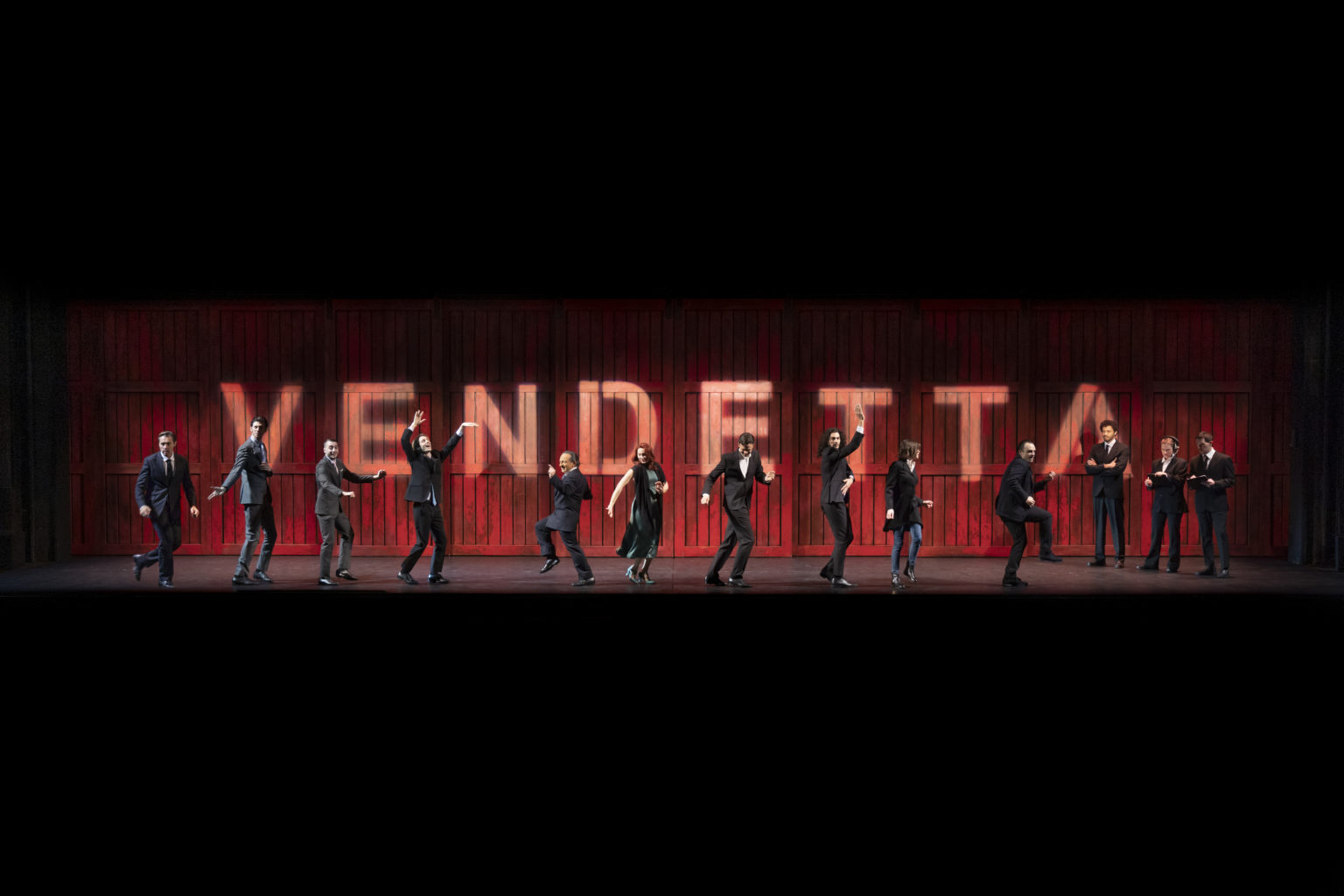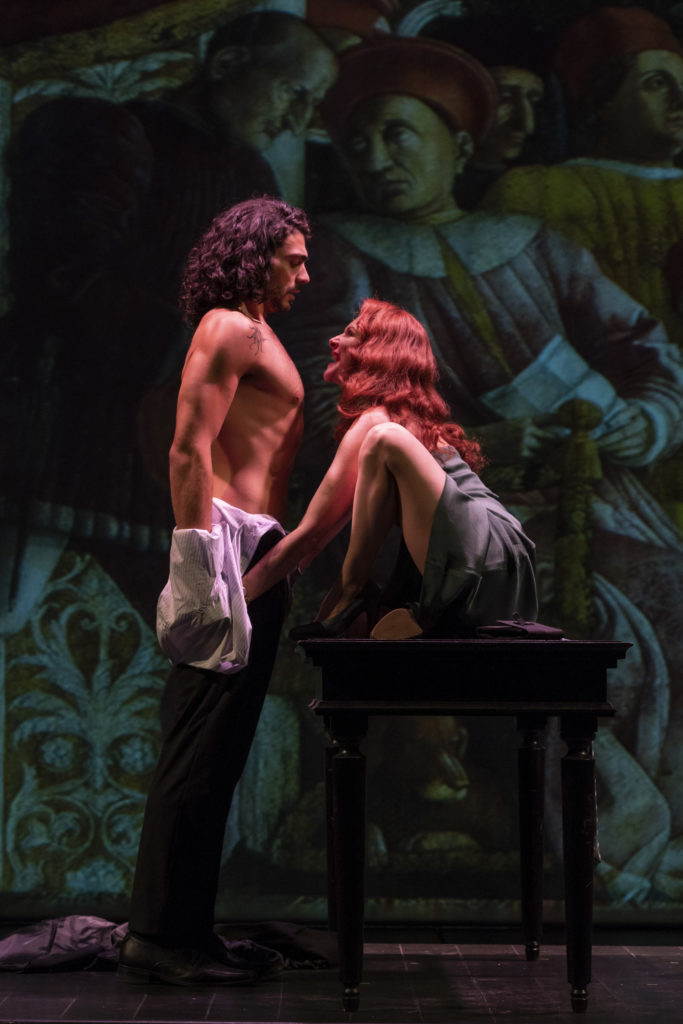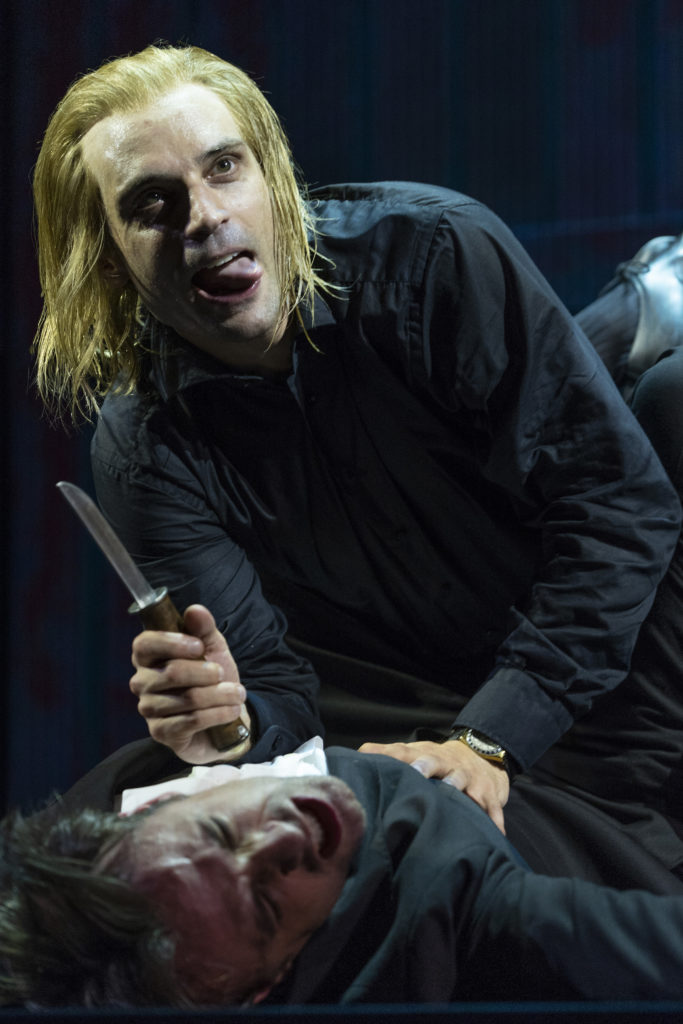Skip links
An interview with Gianluca Misiti



WARNING: This interview contains spoilers.
Ahead of our 2020 performances in Milan, London, Madrid and Paris, we spoke to Gianluca Misiti, who composed the music to The Revenger’s Tragedy.
How does music fit into the production of The Revenger’s Tragedy?
Within the “Tragedy”, two different sound elements coexist. One is musical and melodic, the other composed of brief sounds, effects and noises that Declan immediately defined as “stings”.
Among the pieces of music, the one that stands out most of all is undoubtedly “Ahi Ahi Ahi”, composed together with my sister, Raffaella Misiti, who also performs the song. It is a piece with the atmosphere and sound of swing, with a pounding and catchy chorus, as though it were played by a small and slightly tatty jazz orchestra during an “upbeat” New Orleans funeral, and is completely out of line with what one would expect for a staging of a work by Middleton, but which in reality manages to reflect and communicate the irony and the sense that the director wanted to give to his original interpretation of the play.
“Mystery, seduction and at times the sacred intertwine, shifting between classic and modern, acoustic and electronic, irony and drama.”
While this piece is undoubtedly in contrast to the scene, providing the musical background to the dramatic and long finale, with its multiple murders, the rest of the music accompanies the action on stage in a more harmonious manner. Mystery, seduction and at times the sacred intertwine, shifting between classic and modern, acoustic and electronic, irony and drama.
The request by Declan that most intrigued me, made during our initial meetings, concerned what he referred to as “stings”. He told me that he wanted to accentuate the opening and closing of the great doors that dominate the scene, the entrance and exit of the characters, the turning on of a light, a knock on a door, the stab of a knife and even the rumble of thunder called for by Vindice to an imaginary and external television director, all through strong and decisive sounds and noises that split the silence, at times violently, and create a surreal and film-like, cartoonish and cinematographic dimension.
“I thought about bringing together the chilling potential of violins in a shower with more electronic sounds, digging into my imagination and into the horror genre”
How did you begin the creative process for the music for this play?
Initially, Declan gave me indications that were precise and efficient, but also rather obscure. My English is not great, but the communication, at least from my point of view, was immediate!
The “Thriller” element was undoubtedly the starting point. We discussed Bernard Hermann (Psycho, Vertigo, North by North-West and many other masterpieces) as well as Itay’s very own Dario Argento, and so I thought about bringing together the chilling potential of violins in a shower with more electronic sounds, digging into my imagination and into the horror genre, of which I have always been a great fan.
I took the script as my cue for composing, and I based my work on these initial indications, at the time far off from rehearsals, building up a “library” of sounds that could then be transformed into the desired stings.
I finished my work in Milan, during the staging, placing the music directly onto the scenes during rehearsals and working together with the Piccolo Teatro sound technicians to create a suitable spatialisation of sound that drew the audience as much as possible into the atmosphere of the play.
What other musicians’ work did you draw inspiration from in the process of preparing for this play?
I have already mentioned Bernard Hermann and his soundtracks, above all those composed for Alfred Hitchcock, as well as Dario Argento, for whom Goblin and Claudio Simonetti composed memorable pieces that have always been an interesting blend of fear and irony, at times bordering on kitsch, an aspect that rendered them unique and very original.
The composition of the song “Ahi Ahi Ahi” was inspired by the idea of the director, at the very beginning of rehearsals, to use a piece by Carmen Miranda for the finale, in total contrast to the events taking place in the scene in one of the most dramatic moments of the Tragedy.
At a certain point, I was asked for a “sexy” piece for the scene in which the Duke has a date, one that ends with his death, and I decided to present Declan and Nick with a track by Armando Trovajoli, with that typical atmosphere of Italian comedy of the period. They found it very funny, and in effect it was perfect, so for that sequence I composed a piece that was greatly inspired by the Maestro and his sound, citing him in the title, a tribute to his music.
For the effects, my work in recent years for the cinema, the relations with sound designers and sound-effects people, helped me a lot in choosing and creating the sounds that could accompany the play. I can’t deny that it was all very stimulating and fun, part of a serious game, theatre.
Click here to see our 2020 Performances of The Revenger’s Tragedy
Click here for The Revenger’s Tragedy Spotify playlist, taken from Gianluca Misiti’s influences.